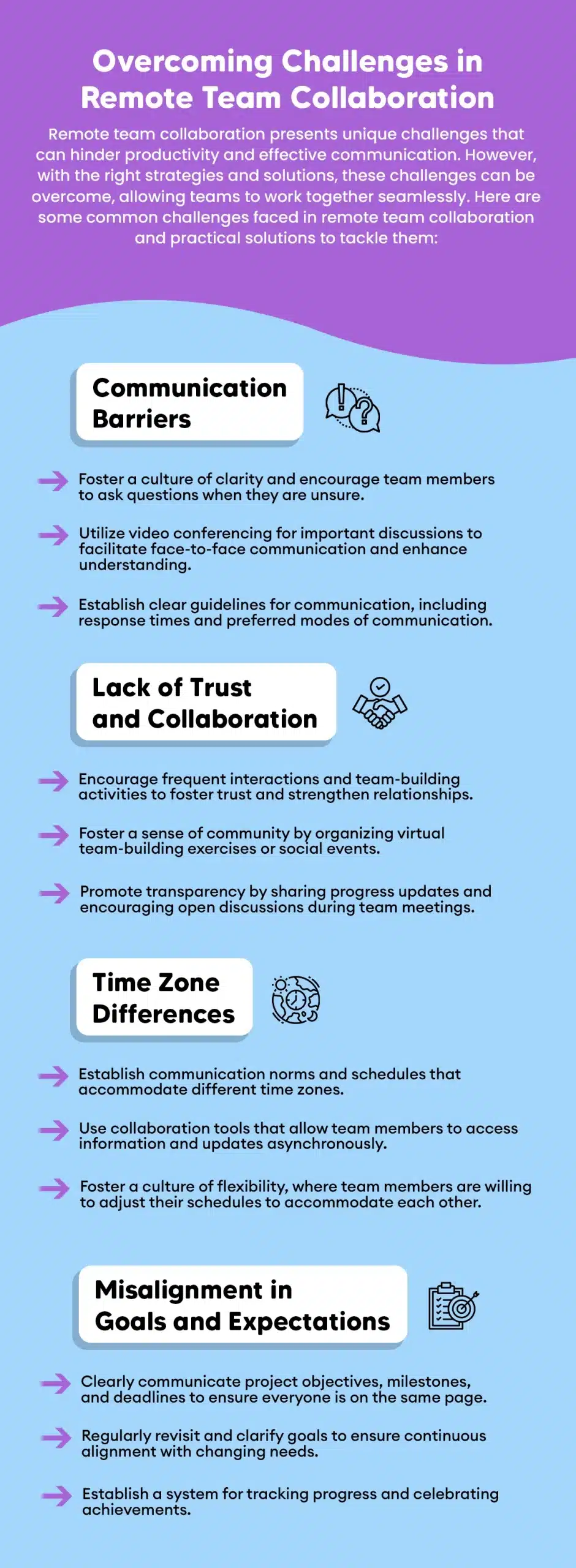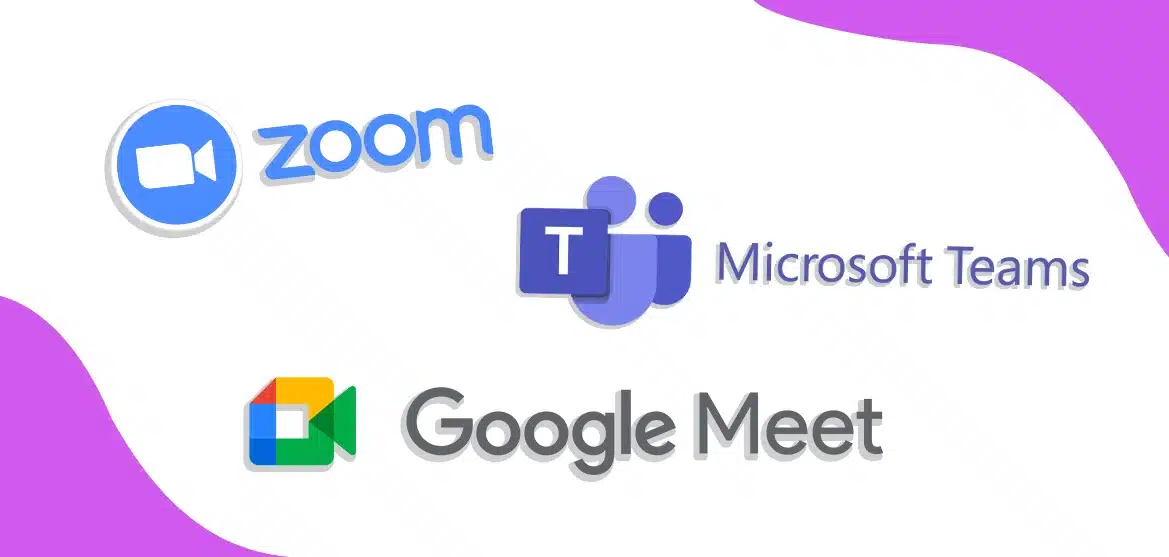Table of content
Are you struggling to effectively manage your remote engineering teams? Balancing collaboration, productivity, and engagement can be tricky when your team is dispersed. But fear not! In this comprehensive blog, we will explore proven strategies and techniques to successfully lead and manage remote engineering teams, ensuring their optimal performance and success.
Don’t let distance hinder your team’s potential. With the right strategies and tools, you can confidently lead your remote engineering teams towards success. Let’s dive in and unlock the secrets to mastering remote team management!
Best Practices for Managing Remote Engineering Teams
Managing remote engineering teams requires a unique set of skills and strategies to ensure their success. Here are some proven best practices for effectively managing remote engineering teams and fostering collaboration and productivity.
Clear Communication
Maintaining clear and open lines of communication is crucial when managing remote engineering teams. Use various communication channels such as video conferencing, instant messaging, and email to ensure effective and timely communication. Encourage team members to express their thoughts and opinions, and provide regular updates to keep everyone informed.
Setting Expectations
Clearly define expectations and goals for each team member. Establish specific roles and responsibilities, deadlines, and performance metrics. This helps create a sense of accountability and ensures that everyone is aligned towards achieving the team’s objectives. Regularly review and discuss these expectations to track progress and address any challenges.
Foster a Remote-Friendly Work Environment
Create a work environment that supports remote collaboration and promotes productivity. Encourage the use of project management tools and virtual team collaboration platforms to streamline workflows and centralize project information. Provide the necessary resources and support for remote team members, such as access to reliable internet connections and suitable equipment.
Promote Work-Life Balance
Remote work can blur the boundaries between work and personal life. Encourage your team members to establish a healthy work-life balance by setting clear work schedules and encouraging breaks and time off. Foster a culture that values work-life balance and encourages team members to prioritize their well-being.
Regular Check-Ins
Schedule regular check-ins with each team member to provide guidance, support, and feedback. This helps build trust and ensures that everyone is on the same page. Conduct one-on-one video calls or asynchronous communication to address any concerns and provide ongoing support.
Promote Collaboration
Encourage collaboration and teamwork among remote engineering team members. Facilitate opportunities for knowledge sharing, brainstorming sessions, and cross-functional collaboration. Use technology tools that enable real-time collaboration, such as virtual whiteboards and shared document editing.
Recognize Achievements
Acknowledge and celebrate the accomplishments of your remote engineering team members. Recognize their hard work and achievements publicly, whether through team meetings or virtual celebrations. This helps boost morale, foster a positive work culture, and motivate team members to continue their efforts.
Keeping everyone connected and making sure goals are accomplished, adhering to deadlines and other metrics, and providing support to team members while keeping them inspired and engaged with the overall corporate culture are just a few of the particular difficulties that come with managing remote teams.
Even though leading remote teams can be challenging, with the correct tactics in place, good results are still achievable.
Tools for Enhancing Remote Team Collaboration
Collaboration is a critical aspect of managing remote engineering teams. Without effective tools and software, it can be challenging for team members to communicate, share information, and work together efficiently. Fortunately, there are numerous tools available that can enhance remote team collaboration and boost productivity. Here are some recommended options:
Project Management Tools
Trello: This popular project management tool helps teams organize tasks and track progress visually through boards, lists, and cards.
Asana: Asana offers a comprehensive project management solution that enables teams to plan, track, and collaborate on projects seamlessly.
Jira: Ideal for software development teams, Jira facilitates issue tracking, task management, and agile project management.
Communication and Messaging Tools
Slack: With its chat channels, direct messaging, and file sharing capabilities, Slack is an excellent tool for real-time communication and collaboration.
Microsoft Teams: Teams combines chat, video meetings, and file sharing, providing a unified platform for communication and collaboration.
Google Hangouts: Google Hangouts offers video conferencing, instant messaging, and screen sharing, making it easy for remote teams to connect and collaborate.
Document Collaboration Tools
Google Drive: Google Drive allows team members to create, share, and collaborate on documents, spreadsheets, and presentations in real-time.
Microsoft SharePoint: SharePoint enables teams to store, access, and collaborate on documents, making it an ideal tool for document management and collaboration.
Dropbox Paper: With its collaborative writing and editing features, Dropbox Paper promotes seamless document collaboration.
Video Conferencing Tools
Zoom: Zoom offers high-quality video conferencing, screen sharing, and recording capabilities for effective remote team meetings and discussions.
Microsoft Teams: Along with its messaging features, Teams also provides video conferencing capabilities, making it a versatile tool for remote team collaboration.
Google Meet: Google Meet allows teams to host virtual meetings, share screens, and collaborate through video conferencing.
Building a Remote-Friendly Culture
Creating a remote-friendly culture within your engineering team is crucial for their success and overall satisfaction. By promoting inclusivity and fostering a sense of belonging, you can ensure that your team members feel connected and engaged, even when working remotely.
Promoting Inclusivity
Inclusivity is essential in a remote work environment. Here are some strategies to promote inclusivity within your engineering team:
Encourage open communication: Foster an environment where team members feel comfortable expressing their ideas and concerns. Encourage open discussions during team meetings and provide opportunities for everyone to contribute.
Embrace diversity: Celebrate and respect the diverse backgrounds, experiences, and perspectives of your team members. Create initiatives that acknowledge different cultures, traditions, and holidays to foster a sense of belonging.
Provide equal opportunities: Ensure that opportunities for growth, learning, and career development are accessible to all team members. Offer mentorship programs, training sessions, and resources that support professional growth.
Fostering a Sense of Belonging
To create a sense of belonging within your remote engineering team, consider these approaches:
Regular team-building activities: Organize virtual team-building activities to encourage bonding and collaboration. These can include online games, virtual happy hours, or even virtual coffee chats.
Recognition and appreciation: Recognize and appreciate the hard work and achievements of your team members. Regularly acknowledge their contributions and celebrate milestones, both individually and as a team.
Virtual shared spaces: Utilize online collaboration tools and platforms to create virtual spaces where team members can interact and share ideas. This could be a dedicated chat channel, a shared document repository, or a project management tool.
Encourage virtual water cooler conversations: Create opportunities for casual conversations by setting up online channels where team members can chat about non-work-related topics. This helps foster relationships and build camaraderie, just as if they were in a physical office.
By focusing on promoting inclusivity and fostering a sense of belonging, you can create a remote-friendly culture that supports and engages your engineering team. Remember, building a strong remote culture takes time and continual effort, but the benefits of a connected and motivated team are well worth it.
Conclusion
In conclusion, effectively managing remote engineering teams is crucial for their success and productivity. By implementing the best practices and strategies discussed in this article, you can overcome the challenges of remote team collaboration and lead your team to excellence.
By implementing these strategies and focusing on effective remote team management, you can create a positive and productive work environment for your remote engineering team. Embrace the prevalence of remote work and adapt to the changing needs of your team to achieve better work-life balance and exceptional results.
Remember, remote team management requires continuous improvement and adaptation. Stay proactive, embrace new tools and technologies, and prioritize the well-being and professional growth of your remote engineering team.













